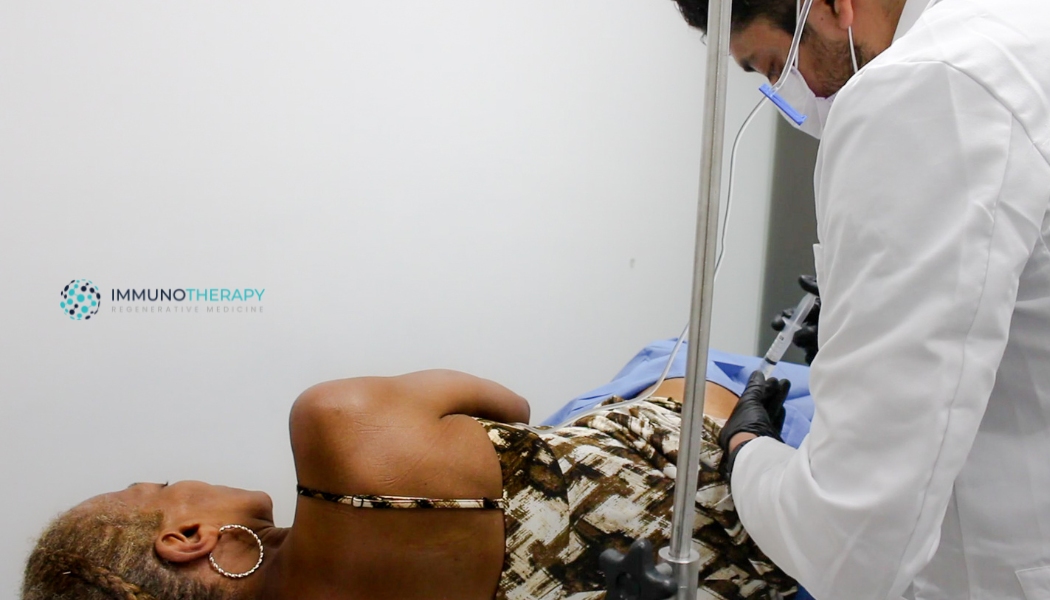Stem Cell Treatment for Hip: Regain Mobility Without Surgery
Stem Cell Therapy for Hip: A Regenerative Alternative to Surgery
Hip pain can drastically limit your mobility and quality of life — whether it’s due to arthritis, a labral tear, or degenerative cartilage damage. At Immunotherapy Regenerative Medicine, we offer an advanced solution: hip pain stem cell therapy that targets the root cause of your symptoms without the need for invasive surgery or long-term medication.
Using mesenchymal stem cells (MSCs) cultivated in our certified laboratory, we focus on regenerating cartilage, reducing inflammation, and restoring joint function for patients struggling with chronic or injury-related hip conditions.

Conditions Treated with Stem Cell Injections for Hips
Our stem cell therapy protocol is tailored to treat a wide range of hip-related conditions, including:
Hip Osteoarthritis
Progressive wear and tear of cartilage that leads to stiffness, swelling, and joint pain.Labral Tear of the Hip
Common in active individuals or aging patients, a torn labrum causes clicking, catching, and deep groin pain.Hip Bursitis & Tendonitis
Inflammation of soft tissues surrounding the hip joint that often fails to improve with rest and steroids.Degenerative Joint Disease
Age-related deterioration that limits range of motion and affects daily activities.Post-Traumatic Hip Pain
Including joint degeneration due to previous injury or repetitive strain.
Why Stem Cells Instead of Hip Surgery?
Traditional options like hip replacement surgery or long-term use of corticosteroids come with risks and side effects. In contrast, our stem cell therapy for hips is:
Minimally invasive
No incisions or prosthetic implants required.Biologically restorative
Uses your body’s own regenerative capacity.Targeted
Injections are guided with ultrasound or fluoroscopy to ensure precise delivery into the hip joint or labral tissue.Zero downtime
Most patients return to light activity the next day.
Our Regenerative Approach: From Diagnosis to Recovery
Our treatment protocol is comprehensive and customized. It includes:
Step 1: Consultation & Imaging Review
We assess your condition with physical examination and review of MRI/CT scans to confirm eligibility.
Step 2: Stem Cell Harvesting & Expansion
We use donor mesenchymal stem cells, cultured under sterile lab conditions for maximum viability (97–99%).
Step 3: Guided Injection
Using image-guided techniques, the stem cells are injected directly into the damaged cartilage or joint space to initiate regeneration.
Step 4: Regenerative Support
We may combine your treatment with ozone therapy, IV peptides, or plasmapheresis to support systemic rejuvenation and inflammation reduction.
Expected Benefits of Hip Stem Cell Therapy
Increased joint mobility
Reduced stiffness and swelling
Delayed or avoided need for hip replacement
Pain relief from labral tears or osteoarthritis
Improved quality of life and physical independence
Most patients begin experiencing relief within weeks and continue improving over the following months.
Is Stem Cell Therapy Right for You?
This treatment is ideal for individuals:
Who want to avoid or delay hip surgery
Experiencing chronic pain due to arthritis, labral tear, or soft tissue injury
Seeking a natural, regenerative alternative to steroids or painkillers
Who are active and wish to preserve mobility long-term
Frequently Asked Questions About Hip Stem Cell Therapy
Is stem cell therapy safe for hip conditions?
Yes. We use high-viability mesenchymal stem cells (MSCs) processed in a certified laboratory under strict safety protocols. All procedures are minimally invasive and performed under medical supervision using image guidance for precision and safety.
What hip problems can be treated with stem cell injections?
Our protocol is effective for a wide range of hip-related conditions, including:
Osteoarthritis of the hip
Labral tears
Degenerative joint disease
Hip bursitis and tendonitis
Chronic post-injury hip pain
How soon will I notice improvements?
Many patients report relief in 2–6 weeks, with continued progress over 3–6 months as tissue regeneration occurs. Results vary depending on the severity of the condition and individual health factors.
Is this therapy a good alternative to hip replacement surgery?
Yes, in many cases. Patients with moderate to severe degeneration who wish to avoid surgery or prolong the lifespan of their joint often benefit from stem cell therapy. Our treatment is non-surgical, natural, and regenerative.
How are the stem cells administered into the hip?
The MSCs are injected directly into the joint or affected tissue using real-time ultrasound or fluoroscopic guidance, ensuring precise targeting of the damaged area for maximum therapeutic effect.
Will I need multiple treatments?
Most patients receive one primary treatment cycle. However, depending on the condition and goals, some may benefit from follow-up applications or complementary therapies (ozone, peptides, PRP, etc.).
Are there any side effects or downtime?
Side effects are rare and typically limited to mild soreness or swelling at the injection site. There’s no hospital stay required — most patients resume light activity within 24 hours.
What is the cost of hip stem cell therapy?
Treatment costs range from $2,000 to $15,000 USD, depending on the condition’s complexity, number of cells required, and any additional regenerative procedures recommended.